As a Sports Eyewear Brand, Which Sports…
With the increasing demand for personalized experiences and high-performance gear among modern sports enthusiasts, customized sports…
Our OEM solution for injection mold eyeglasses help you achieve
custom sports collections successfully.
Molding injection is a high-precision manufacturing process where molten plastic is injected into a custom-designed mold under high pressure. Once cooled, the material solidifies into a durable and perfectly shaped eyewear frame.
As a high-end sports eyewear factory, we leverage advanced molding injection technology to produce lightweight, impact-resistant, and highly customizable eyewear frames. This state-of-the-art process ensures consistency, durability, and superior comfort, making it the ideal solution for professional athletes, outdoor enthusiasts, and sports eyewear brands.
The Problem: Why Traditional Eyewear Frames Fall Short? For athletes and outdoor enthusiasts, ordinary eyewear frames simply don’t meet performance demands. Traditional materials are often too heavy, too rigid, or prone to breaking under intense movement. Poor flexibility leads to discomfort, and subpar impact resistance means frames crack or deform easily.
If you’re an eyewear brand or supplier, low-quality frames result in high return rates, dissatisfied customers, and a weakened brand reputation. How can you offer eyewear that is ultra-lightweight, durable, and impact-resistant to meet the growing demand for high-performance sports eyewear?
The Solution: Advanced Molding Injection for Sports Eyewear
At our high-end sports eyewear factory, we utilize cutting-edge molding injection technology to manufacture frames that are lightweight, flexible, and built to endure extreme conditions.
Why Choose Injection Molding for Sports Eyewear?
✅ Durability & Impact Resistance – Frames withstand drops, shocks, and extreme weather
✅ Lightweight Comfort – No pressure points or discomfort during prolonged wear
✅ Flexibility & Perfect Fit – Adapts to different face shapes, ensuring stability
✅ High Production Efficiency – Ideal for mass production with consistent quality
✅ Customization & Branding – Wide range of colors, finishes, and logo placement options
Using premium materials like TR90, nylon, and polycarbonate, our frames are engineered for peak performance and designed for maximum comfort and durability.
Our Advanced Injection Molding Process
We follow a highly automated and precise injection molding process to ensure every frame meets industry-leading quality standards:
1️⃣ Material Selection – Choosing high-performance plastics like TR90 and polycarbonate
2️⃣ Mold Design & Engineering – CNC-machined molds for precision shaping
3️⃣ High-Pressure Injection & Filling – Ensuring material consistency and flaw-free production
4️⃣ Cooling & Solidification – Strengthening the frame for long-lasting durability
5️⃣ Finishing & Surface Treatment – Polishing, coating, and adding custom branding
6️⃣ Quality Control & Inspection – Ensuring each frame meets strict safety and performance standards
This efficient, high-precision process allows us to create sports eyewear that meets the demands of professional athletes and active consumers.
Materials We Use for Injection Molded Sports Eyewear
💠 TR90 – Ultra-lightweight, flexible, and impact-resistant, perfect for sports eyewear
💠 Polycarbonate (PC) – High-impact strength and UV-resistant, ideal for safety eyewear
💠 Nylon – Heat-resistant, durable, and highly flexible for performance frames
💠 TPE/TPU – Soft, flexible, and shock-absorbing for extreme comfort
By selecting the right material for the right purpose, we ensure that each frame delivers the best balance of strength, comfort, and durability.
Customization Options for Your Eyewear Brand
As a B2B manufacturer, we provide OEM & ODM injection molding services, allowing eyewear brands to create custom high-performance frames that stand out in the market.
🔹 Frame Colors & Finishes – Matte, glossy, translucent, gradient effects
🔹 Logo Customization – Laser engraving or in-mold branding
🔹 Ergonomic Frame Design – Optimized for stability and all-day comfort
🔹 Lens Compatibility – Designed to fit prescription, polarized, or photochromic lenses
We help brands differentiate their eyewear collections with unique, high-quality designs tailored to their market needs.
Why Choose Us as Your Molding Injection Eyewear Manufacturer?
🏆 Industry Expertise – Years of experience in high-end sports eyewear manufacturing
⚙️ Cutting-Edge Technology – Advanced machinery ensures precision and efficiency
🌍 Trusted by Global Brands – Proven track record in delivering high-quality eyewear
📦 Fast & Scalable Production – High-speed manufacturing for global distribution
🌱 Sustainable & Eco-Friendly – Options for recyclable and biodegradable materials
We are committed to helping eyewear brands innovate, scale, and succeed with world-class injection molding technology.
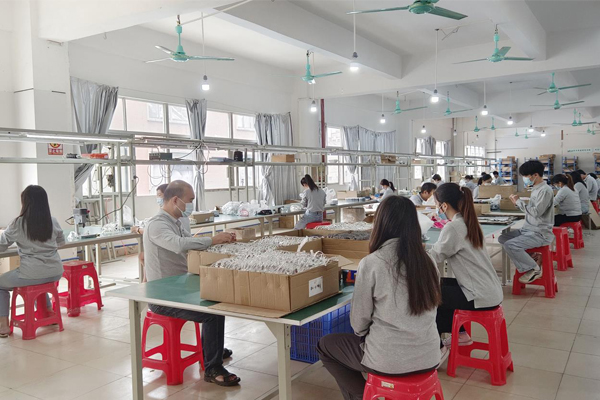
We draw 3d design based on your needs, then do a prototype for your checking.

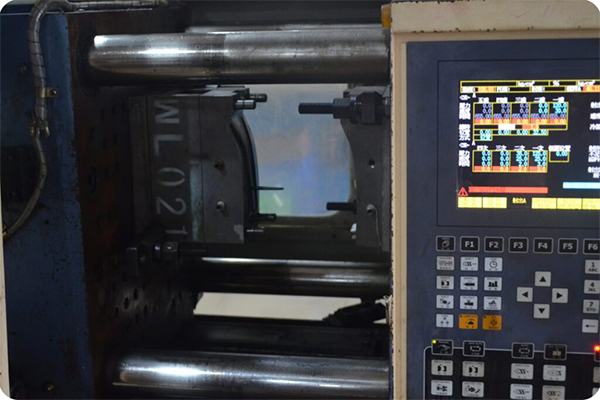
Injection molding (7-10 days, about 2 days in addition to the single, about 2000-3000 pairs/day
Checking the lens material, whether it’s scratched, whether it’s uv400 tested
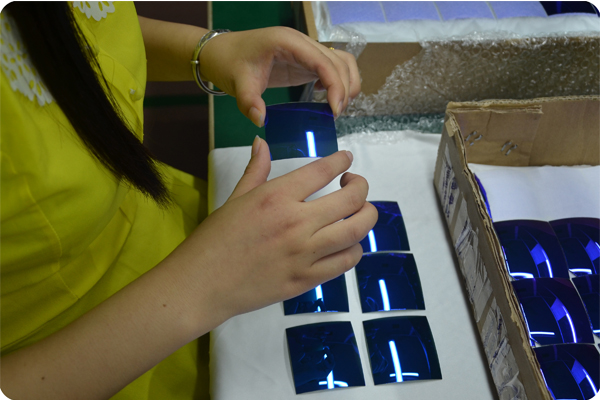
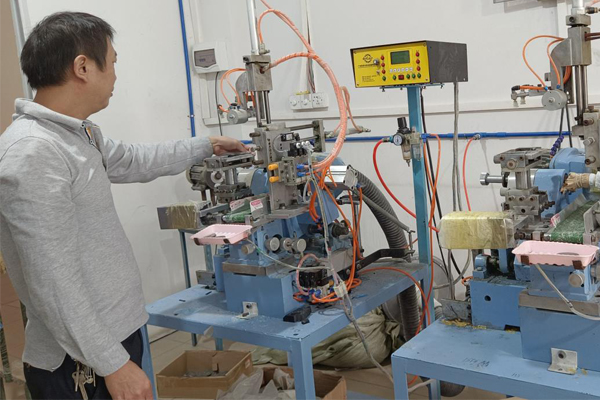
When checking the lens quality, we begin to cutting the lens shape
Our logo design ususally do the silk print, hot stamp, 3D printing, UV stamping, metal logo, laser
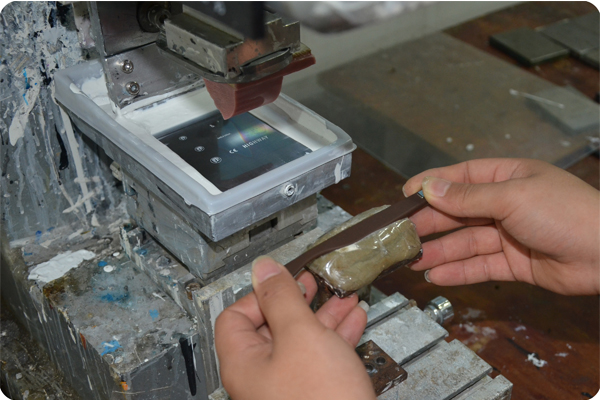
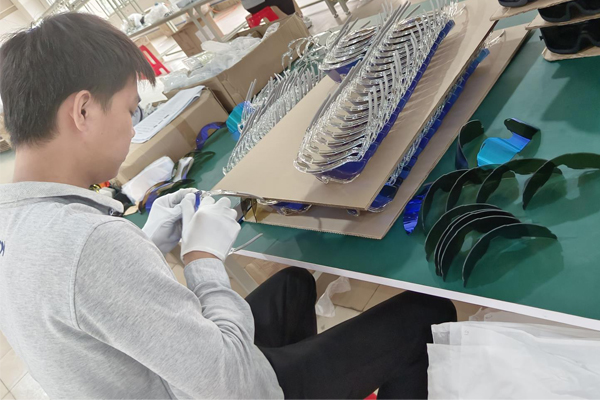
Assemble the mirror lens into the tr90 frame
When we finished the sunglasses. we will check the sunglasses quality, whether there is dust, whether the mirror leg is uneven

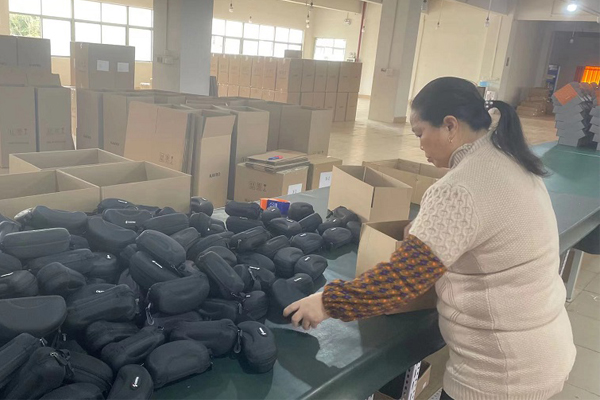
When we finished the packages, we will shipping the goods by DHL/UPS/Fedex or other shipment style, and you will received the packing on time
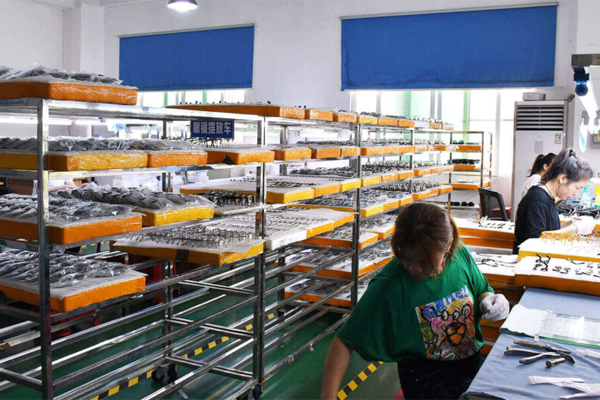
At Eyewearbeyond, we offer tailored custom sports glasses eyewear to meet the diverse needs of athletes worldwide. Whether it’s cycling, running, skiing, or high-impact sports, we provide performance-driven eyewear with impact-resistant frames, polarized lenses, and options like TR90 plastic for durability and comfort. We also offer prescription sports glasses, anti-fog coatings, and UV protection lenses, ensuring both functionality and style, no matter the sport or environment.
With the increasing demand for personalized experiences and high-performance gear among modern sports enthusiasts, customized sports…
Every athlete knows that the right equipment is crucial for maximizing performance. Whether you’re a professional…
With the growing awareness of sports safety, particularly in high-intensity sports like basketball, protecting your eyes…
As people become more health-conscious and environmentally aware, cycling has taken off as both a healthy…
Are you looking to create unique swim goggles for your brand but feel overwhelmed by the…
In the ski goggles market, both brands and retailers face a common challenge: product homogenization. How…
As one of the most popular manufacturing techniques for mass production, plastic injection molding can be used with many different thermoplastics to make parts with complicated designs that would be nearly impossible to create with any other method. If you’d like to know how it works and how it measures up to 3D printing, keep on reading.
Before we go into the ins and outs of the injection molding process, you’ll first need to know about the machine’s various components and what they do.
All the important parts of an injection molding machine are shown in the image below, with descriptions of each in the table further down.

| Part | Location | Job | Appearance |
|---|---|---|---|
Barrel | In the middle of the machine, houses reciprocating screw | Holds, melts, and mixes plastic pellets, ensuring uniformity and maintaining pressure during injection | Long cylindrical tube wrapped in heater bands, with a heated nozzle tip |
Gates | Between runners and mold cavity | Control the flow of molten plastic into the cavity | Small openings |
Heaters | Outside the barrel | Provide thermal energy to melt the pellets, control the temperature in the barrel | Metal bands around the barrel |
Hopper | Top of the machine, near the barrel | Feeds material into the barrel, sometimes includes a dryer to remove moisture that could damage parts | Funnel-shaped opening |
Mold | Attached to the stationary and movable platens | Shapes the molten plastic into the final part | Metal block, typically two halves (stationary and movable), includes the mold cavity, ejector pins, cooling channels, and vents |
Mold Cavity | Inside the mold | Creates the final shape of the molded part, has vents for good airflow, and lets air escape | Hollow space shaped like the desired part includes runners, sprues, gates, and vents |
Movable platen | Linked to the core of the mold | Moves to clamp the mold halves tightly and release the core when the part is done | Flat, rectangular metal plate |
Nozzle | At the end of the barrel, facing the mold | Directs molten plastic into the mold cavity, prevents it from cooling as it enters sprues and runners | Tapered, heated outlet |
Pellets | Inside the hopper and barrel | Raw plastic material for molding, commonly thermoplastics like ABS, PP, or nylon, and sometimes with dyes and/or other additives | Small, plastic granules of the same size |
Reciprocating screw | Inside the barrel | Mixes, compresses, and forces the pellets through the barrel as they melt, pulls back to allow more material in for the next cycle | Corkscrew-shaped rod |
Runners | Channels within the mold | Direct molten plastic from the sprue to the gates for even flow and minimal waste, often removed after molding | Long, narrow pathways |
Sprue | Central channel that connects the nozzle to the runners, the entry point of molten plastic | Guides molten plastic from the nozzle to the runner | Cone-shaped channel |
Injection Molding Machine Components
Plastic injection molding uses thermoplastic pellets, which need to be melted first. These are fed into the hopper and make their way to the barrel, where the reciprocating screw pulls back to make room for them to get through. The screw then goes forward again to force the plastic through the nozzle. The pressure from the platen makes sure that no plastic can get away by bringing the nozzle and mold closely together tightly. Here, the melted plastic is pressurized, something that makes it go into all the mold cavity’s parts, taking up the space that the air previously occupied. As the plastic fills every single crevice (including the sprues and their buddies, runners, and gates), the air that was in that empty space now comes out of the mold vents.
The mold has to stay steadily at a temperature that aligns with the specific material’s melting point so that the part inside can cool and harden evenly. In addition, the holding pressure also has to be constant so that there’s no backflow of material into the barrel. This also keeps the shrinking under control. More pellets are then put in the hopper so there’s no downtime—once the part is cooled and taken out, it’ll be ready to go again. The platen opens when it’s time to eject your creation, and the screw does its job again—allowing room for material before pushing it through… it basically works like this on a loop.
Before you see all your wonderful products being made, you need to take care of two important things: your mold design and the actual mold.
First things first, your product needs to be designed. This is typically done as a CAD file or other transferable format, and you’ll follow the necessary design guidelines for the particular injection molding process you’re using. For the best chance of success with injection molding your plastic parts, try to include features like bosses for threaded inserts or fasteners, hollow cavities for thicker sections, rounded edges, ribbed supports for extra strength, snap-fit joints, or friction fits as joining features, living hinges where you need some flexibility, and draft angles on vertical walls. You’ll also want to make sure that wall thicknesses are consistent (or as much as possible) and avoid features that can lead to defects. These include overly thin/thick walls, sudden changes to the shape, i.e., sharp corners, randomly placed holes, badly designed ribbing, and undercuts or overhangs.
The tooling mold is undoubtedly the star of the show in the whole injection molding process. Making this, however, is no walk in the park—it’s the longest and most expensive part of the whole process and needs to be done by professional machinists who know exactly what they are doing. Based on your design, these experts craft the “tool” (that’s what those in the know call a tooling mold), then make their own blueprint that has all the necessities (cavity, sprues, gates, ejector systems, etc.). If you think that you’ll get your mold on next-day delivery, think again; the process of making the mold (including approvals) can take 20 weeks… sometimes more! So imagine how long you’ll have to wait (and how much it’ll cost) if you need to make changes to the mold… Suffice it to say, it’s important to get the design right before handing it over.
The materials listed in the below table are all suitable for plastic injection molding.
| Material | Resistant to | Not Resistant to | Characteristics/Applications |
|---|---|---|---|
Polypropylene (PP) | Chemicals, moisture, fatigue, moderate impact, moderate heat (100–120°C) | UV light, high heat | Moderate strength, lightweight, flexible; containers, automotive parts, textiles |
High-density polyethylene (HDPE) | Chemicals, moisture, weather, high impact, moderate heat (70–120°C) | UV light, high heat | Tough, fairly hard, durable; pipes, bottles, and toys |
Polystyrene (PS) | Stiffness, machinability | Impact, chemicals, low heat (<100°C) | Brittle, clear or opaque, easy to mold; packaging, disposable cups, and insulation |
Polyethylene (PE) | Chemicals, moisture, high impact, low to moderate heat (70–120°C) | UV light, high heat | Tough, flexible; bags, containers, and insulation |
High-impact polystyrene (HIPS) | Moderate impact, machinability, low to moderate heat (<100°C) | UV light, high heat, solvents | Moderately strong, tough, versatile; signs, toys, and casings |
Polyvinyl chloride (PVC) | Chemicals, flame, moderate impact, moderate heat (60–82°C) | High heat, solvents | Fairly tough, rigid, durable; pipes, flooring, and cables |
Acrylic (PMMA) | UV light, weathering, scratches | Impact, chemicals, low to moderate heat (~100°C) | Fair strength, brittle, transparent; lenses, windows, and displays |
Acrylonitrile butadiene styrene (ABS) | Impact, chemicals, moderate heat (100–110°C) | UV light, solvents | Tough, machinable; car parts, toys, and casings |
Polycarbonate (PC) | High impact, UV light, high heat (~135°C) | Abrasion, solvents | High toughness, hard, transparent; eyewear, electronics, and automotive parts |
Nylon (PA) | Wear, fatigue, moderate impact, moderate to high heat (120°C) | Moisture, acids | High strength, tough, low friction; gears, bearings, and textiles |
Polyurethane (TPU) | Abrasion, fatigue, moderate impact | Heat (>80°C), chemicals | Very flexible; seals, wheels, and footwear |
Polyetherimide (PEI) | Heat (170–200°C), chemicals, low to moderate impact | Impact | Strong, rigid; aerospace components, medical devices |
Polyether ether ketone (PEEK) | Heat (260°C), chemicals, low to moderate impact | UV light | High strength, rigid; aerospace parts, medical implants |
Polyphenylene sulfide (PPS) | Chemicals, heat (280°C), low to moderate impact | Impact | Moderate strength, hard, dimensionally stable; electrical components |
1. What are injection molded glasses?
Injection molded glasses are eyewear frames created using the injection molding process. This involves heating plastic materials to a molten state and injecting them into a pre-designed mold under high pressure. The plastic cools and solidifies into the shape of the mold, forming the frame of the glasses. This method is popular for producing various types of eyewear, such as sunglasses, sports glasses, and ski goggles, due to its efficiency and ability to create complex designs.
2. What materials are commonly used in injection molded eyewear?
Common materials include:
3. How does the injection molding process work?
The process involves several key steps:
This process is highly efficient, allowing for the rapid production of large quantities of eyewear with consistent quality.
4. What types of eyewear can be produced using injection molding?
Injection molding is versatile and can be used to produce a wide range of eyewear, including:
5. What are the benefits of using injection molding for eyewear production?
The benefits include:
6. How do I ensure the quality of injection molded eyewear?
Quality assurance involves several steps:
By following these steps, manufacturers can maintain high-quality standards in their injection molded eyewear products.
7. Can injection molded eyewear be customized?
Yes, injection molding allows for extensive customization. You can design unique frame shapes, colors, and textures. Additionally, the process supports the use of different materials tailored to specific functional needs, such as increased flexibility or impact resistance. Customization is especially valuable for brands looking to differentiate their products in the market.
8. How long does it take to develop a new injection molded eyewear design?
The development timeline for a new injection molded eyewear design can vary depending on the complexity of the design and the production process. Typically, the timeline involves several stages:
Overall, the entire process from concept to finished product can take several months.
9. How does injection molding compare to 3D printing for eyewear production?
Injection molding and 3D printing are two different manufacturing methods, each with its own strengths:
Choosing between the two depends on the production volume, customization needs, and budget.
10. What are the environmental impacts of using injection molding for eyewear production?
The environmental impact of injection molding can vary depending on the materials used and the efficiency of the production process:
When it comes to high-performance sports eyewear, injection molding is one of the most efficient and reliable manufacturing methods. This process allows for lightweight, durable, and precisely engineered frames that withstand extreme conditions.
But how exactly are injection-molded eyewear frames made? From material selection to final quality control, this guide walks you through every step of the process, revealing the advanced techniques behind precision sports eyewear manufacturing.
Injection molded glasses are eyewear frames manufactured using a high-efficiency technique called injection molding. This process involves heating plastic materials until they reach a molten state and then injecting them into a pre-designed mold under high pressure. Once the plastic cools and solidifies, it forms a specific shape—the frame of the glasses. The main advantages of injection molded eyewear lie in the efficiency of production and the flexibility in design. This process allows for complex designs that meet various aesthetic and functional needs. Sunglasses, sports eyewear, and ski goggles, among others, are commonly produced using this technique.
The core features of injection molded eyewear include:
Overall, injection molding has become an industry standard due to its versatility and efficiency, particularly in situations where rapid production and high uniformity are required.
Design and development are crucial steps in the production of injection molded eyewear. First, designers use computer-aided design (CAD) software to create a 3D model of the eyewear. This model includes not just the basic shape of the frame but also details such as the thickness, curves, and connection points. Every small design element impacts the final product’s appearance and functionality.
After completing the design, the next step is mold design. The mold is the heart of the injection molding process, as all the shapes and details of the eyewear come from this mold. Therefore, mold design requires a high degree of precision. Molds are typically made from steel or aluminum, materials that are not only durable but also capable of withstanding the high temperatures and pressures involved in the injection process.
Designers must also consider how to make the mold design more efficient, lowering production costs. For this reason, they often design detachable mold components that can be adjusted when necessary without requiring a completely new mold. This process not only improves production flexibility but also ensures high-quality output.
After completing the mold design, the next step is mold manufacturing. This is a highly precise process, usually requiring the use of CNC (computer numerical control) machines. These machines ensure that every detail of the mold is reproduced accurately, which directly affects the quality of the injection molded eyewear.
The mold manufacturing process can be divided into several key steps:
Once the mold is manufactured, it must undergo rigorous testing to ensure it matches the design model exactly. This typically involves measuring dimensions, checking surface quality, and testing durability. These checks ensure the mold can operate consistently in mass production, without causing production delays or product quality issues.
With the mold ready, the actual injection molding phase begins. The first step is selecting the right plastic materials. Common materials include TR90, nylon, and polycarbonate. Each material has its own advantages, providing suitable performance characteristics for different types of eyewear. For instance, TR90 offers excellent impact resistance and flexibility, making it ideal for sports eyewear, while polycarbonate is known for its high transparency and durability, making it commonly used in safety glasses and sunglasses.
Next, the injection machine settings are crucial. The machine’s temperature, pressure, and injection speed must be carefully adjusted according to the material’s characteristics. Different materials require different processing conditions, so these parameters are critical to the quality of the finished product.
The key steps in the injection molding process are as follows:
| Step | Description |
|---|---|
| Material Melting | The plastic granules are heated to a molten state, typically between 200-300°C. |
| Injection | The molten plastic is injected into the mold cavity; the injection time usually takes only a few seconds. |
| Cooling and Solidification | The plastic cools and solidifies inside the mold, a process that can take seconds to minutes depending on the material and product complexity. |
| Product Ejection | The mold opens, and the formed eyewear frame is ejected. This stage often includes an initial quality check to ensure no visible defects. |
The primary advantage of the injection molding process is its efficiency and repeatability, producing large quantities of uniformly high-quality products in a short time, which is especially important for products that need to hit the market quickly.
After the injection molding is complete, the eyewear frame typically undergoes a series of post-processing steps. These steps include trimming, polishing, and surface treatment, all of which enhance the product’s appearance and functionality.
Trimming involves removing any excess material produced during the injection process, particularly along mold seams where excess plastic may accumulate. By trimming, the frame edges are smoothed, avoiding any roughness that might affect wearing comfort.
Polishing ensures that the frame’s surface is smooth and aesthetically pleasing. Polishing is usually done mechanically and removes minor surface imperfections, making the frame look and feel more refined.
Surface Treatment varies depending on design requirements. This could include painting, electroplating, or coating the frame. Surface treatments enhance both the appearance and durability of the eyewear. For example, some surface treatments can increase the frame’s resistance to corrosion or provide it with a specific color and texture.
The final step is assembly. During this phase, lenses are fitted into the frames, and additional components like nose pads and temples are attached. Precision is essential during assembly to ensure all components are securely fitted and correctly aligned, ensuring both the aesthetic appeal and functionality of the glasses.
Quality control is a critical step in ensuring the final quality of injection molded eyewear. Each pair of glasses must pass strict quality checks before being released for sale. These checks include evaluating the accuracy of dimensions, the quality of the appearance, and the effectiveness of surface treatments.
| Inspection Item | Inspection Content |
|---|---|
| Dimensional Accuracy | Measuring key dimensions of the frame to ensure they meet design specifications. |
| Appearance Quality | Checking the frame’s surface for scratches, bubbles, or other defects to ensure a flawless appearance. |
| Surface Treatment | Ensuring that coatings, paint, or electroplating are smooth and consistent, with the correct color and texture. |
Once the eyewear passes these quality checks, it is cleaned and packaged. Packaging not only protects the product during transportation but also enhances the brand’s image, providing customers with a satisfying unboxing experience. Finally, the eyewear is prepared for shipment and distribution to the market.
Injection molding is widely used in the manufacture of various types of eyewear. Here are some typical applications:
Sunglasses: Injection molding allows for the production of diverse sunglass designs, meeting various consumer aesthetic needs. This process easily enables the creation of complex frame shapes and colorful designs, making it suitable for the fashion industry.
Sports Eyewear: Sports eyewear requires high strength and impact resistance. Materials like TR90 and nylon, used in injection molding, are ideal for making these glasses, ensuring they provide optimal protection and comfort during physical activities.
Ski Goggles: Ski goggles must be fog-resistant, windproof, and adaptable to varying light conditions. Injection molding can produce robust and well-designed ski goggles that ensure safety and comfort in extreme environments.
Safety Glasses: Safety glasses used in industrial and laboratory environments demand extremely high impact resistance and durability. Injection molding with materials like polycarbonate can produce eyewear that meets these requirements, providing effective eye protection in high-risk environments.
Children’s Glasses: Children’s glasses must be highly durable and safe, especially regarding resistance to dropping and stretching. Injection molding uses materials like TPE (thermoplastic elastomer) or TPU (thermoplastic polyurethane), which are flexible and durable, maintaining their integrity during everyday activities. Additionally, the injection molding process allows for more diverse and attractive designs for children’s eyewear, incorporating playful patterns or vibrant colors that appeal to young wearers.
Optical Glasses: Optical glasses are the most common type of eyewear in daily life. Because wearers often wear these glasses for long periods, the frames must be lightweight, comfortable, and capable of securely holding the lenses. Injection molding provides excellent results in these areas. With precise mold design, manufacturers can create ergonomically designed frames that ensure a good fit on various face shapes. Injection molding’s high precision also ensures that the lens grooves are sized accurately, making the lenses secure and properly aligned.
Blue Light Blocking Glasses: As the reliance on electronic devices increases, the demand for blue light-blocking glasses has risen. These glasses are designed to reduce the harmful effects of blue light emitted from screens, making them ideal for people who spend long hours on computers, phones, or other electronic devices. Injection molding ensures that these frames are lightweight and comfortable, making them suitable for prolonged wear.
Fast Fashion Glasses: Fast fashion eyewear has become a trend in the fashion industry in recent years. Due to the rapid changes in fashion trends, fast fashion eyewear must be produced with extreme flexibility to quickly responding to market demands. Injection molding shows great competitiveness in this area. This process allows manufacturers to quickly design and produce eyewear that aligns with the latest fashion trends and efficiently deliver it to the market at a low cost.
Injection molding has brought significant technological advancements to the eyewear manufacturing industry. This process not only improves production efficiency but also ensures the consistency and quality of the products. From sunglasses to blue light-blocking glasses to fast fashion eyewear, the applications of injection molding are vast. It meets consumer needs for aesthetics, functionality, and comfort while providing brands with a strong competitive edge in a rapidly changing market. Whether pursuing fashion trends or focusing on functional practicality, injection molding helps eyewear manufacturers produce high-quality products that meet market demands.
Through this article, you can see how injection molding is applied in various types of eyewear manufacturing and understand why this process is so crucial in modern eyewear manufacturing. Whether for large-scale production needs or the pursuit of personalized design, injection molding offers an ideal solution for eyewear manufacturers.
1. How to choose the right materials?
Issue: Brand clients often struggle to balance quality, appearance, and cost when selecting materials.
Solution: Consult with the manufacturer about the characteristics, durability, color options, and availability of materials to make the best decision.
2. How to ensure the design aligns with the brand image?
Issue: Ensuring that the custom eyewear design is consistent with the overall brand image and ethos can be challenging.
Solution: Work closely with the designer to clarify the brand’s core values and visual style.
3. How long is the production cycle?
Issue: Clients may worry that production time will be too long, affecting the launch schedule of new products.
Solution: Clarify the production cycle at the beginning of the project and allow enough time to handle potential delays.
4. How to control production costs?
Issue: Balancing high quality with cost control is a common challenge.
Solution: Discuss the costs of different materials and processes with the manufacturer and optimize the design to reduce waste and additional expenses.
5. What is the minimum order quantity (MOQ)?
Issue: Brand clients may require small-batch production, but manufacturers often have minimum order quantity requirements.
Solution: Confirm the manufacturer’s MOQ and assess whether you need to adjust the order quantity or find an alternative supplier.
6. How consistent are the samples with the final product?
Issue: Clients worry that the samples may differ from the final product produced in large quantities.
Solution: Ensure that the samples are thoroughly tested before production and request detailed records and standardized production processes.
7. How to handle quality control issues?
Issue: Ensuring that each batch of products meets quality standards can be challenging.
Solution: Establish a strict quality control process, including multiple inspections before, during, and after production.
8. Is it possible to achieve complex designs?
Issue: Some brand clients want to achieve unique or complex designs but are unsure if it’s feasible.
Solution: Discuss the technical capabilities and limitations with the manufacturer to ensure the design can be realized in production.
9. How to manage design changes?
Issue: Making changes to the design during production may lead to additional costs and delays.
Solution: Clearly define all details during the design phase and agree on the change process and fees with the manufacturer.
10. How to arrange logistics and shipping?
Issue: International logistics may cause delivery delays or increased costs.
Solution: Choose experienced logistics partners and plan the shipping schedule, considering customs and other potential delays.
11. How to ensure lens and frame compatibility?
Issue: Ensuring that the lenses fit perfectly within the frame is a common concern, especially for custom shapes.
Solution: Discuss the technical specifications of lenses and frames in detail with the manufacturer and conduct tests to ensure precise matching.
12. How to handle customer feedback?
Issue: After launching a new product, brands may receive feedback regarding design or comfort that may require adjustments.
Solution: Set a feedback period, collect customer opinions, and work with the manufacturer to make adjustments if necessary.
13. What eco-friendly options are available for custom eyewear?
Issue: Brand clients are increasingly concerned about eco-friendly materials and sustainable production processes.
Solution: Discuss available eco-friendly materials and low-carbon production options with the manufacturer and highlight this in brand marketing.
14. How to ensure color consistency?
Issue: Maintaining color consistency across different batches can be challenging.
Solution: Use materials from the same batch for production and ensure that all colors are thoroughly tested and confirmed before production.
15. How to handle returns or damaged products?
Issue: Clients may receive damaged or non-standard products, requiring handling of returns and compensation.
Solution: Establish a clear return and compensation policy and agree on the handling process with the manufacturer in such cases.
16. How to address intellectual property concerns?
Issue: Brands worry that custom designs might be copied or imitated, affecting brand uniqueness.
Solution: Sign confidentiality agreements with the manufacturer and consider applying for patents or trademarks for key designs.
17. How to ensure comfort and wearability?
Issue: Even if the design and materials are excellent, if the glasses are uncomfortable to wear, customers may still be dissatisfied.
Solution: Emphasize ergonomics during the design phase and conduct fitting tests to ensure comfort.
18. How to optimize design to reduce waste?
Issue: Material waste during production can increase costs and cause environmental concerns.
Solution: Work with the manufacturer to optimize design and cutting processes to minimize waste.
19. How to comply with different market regulations and standards?
Issue: Different countries and regions have varying eyewear standards and regulations that need to be met.
Solution: Ensure that the design and production comply with the laws and standards of the target market and consider certification and testing requirements.
20. How to manage communication with the manufacturer?
Issue: Miscommunication during the custom process can lead to misunderstandings and delays.
Solution: Establish clear communication channels, regularly update project progress, and ensure that all key decisions are documented and confirmed.
These issues reflect the various challenges that brand clients may encounter during the custom eyewear process. By closely collaborating with manufacturers, maintaining clear communication, and carefully planning, many of these issues can be identified early and effectively addressed.
Unclear on How to Start the Customization Process
Unclear Design Requirements
Lack of Understanding of Materials
Budget Overruns
Unrealistic Expectations About Production Time
Overlooking Design Details
Unclear on Minimum Order Quantity (MOQ)
Ignoring Wearability
Poor Communication
Lack of Consideration for Brand Consistency
These issues represent common challenges that beginners might face when customizing eyewear. By understanding them in advance and being well-prepared, these problems can be effectively minimized, allowing for a smoother customization process.
In the modern eyewear market, material choice impacts more than just the appearance and comfort of the glasses; it also ...
Injection molding has become a cornerstone in the manufacturing of eyewear. This technique has revolutionized the way glasses are produced, ...
Injection molding technology plays an indispensable role in the eyewear manufacturing industry. This highly efficient and precise manufacturing method enables ...
I. Introduction Plastic eyewear frames have become a staple in the modern eyewear industry, renowned for their lightweight construction, versatility, ...
I. Introduction Eyewear, as an indispensable tool in our daily lives and a fashionable accessory, involves a complex and precise ...
Plastic is a go-to material for making eyewear, and for good reason. Different types of plastic like TR (thermoplastic rubber), ...
1. What are custom sports goggles? Custom sports goggles are tailored eyewear designed specifically for athletic use. As a custom buyer, you can specify materials, lens types, and frame designs to meet the exact needs of your customers, whether they are cyclists, skiers, or swimmers.
2. What materials are used in custom sports goggles? You can choose from various high-quality materials, such as polycarbonate for impact-resistant lenses and TR90 or nylon for lightweight, durable frames. For added comfort, silicone is often used for straps and padding. Customization allows you to select the best materials for the specific sports needs of your customers.
3. Can custom sports goggles be made with prescription lenses? Yes, custom sports goggles can be fitted with prescription lenses, ensuring that your customers who need vision correction can also enjoy their sports with optimal clarity and protection.
4. How do I choose the right lens tint for my custom sports goggles? The lens tint should match the specific conditions your customers will face. For example, yellow or amber lenses enhance visibility in low light, while darker tints or mirrored lenses reduce glare in bright sunlight. You can guide your customers in selecting the best tint for their activities.
5. What types of sports benefit from custom goggles? Custom sports goggles are ideal for a variety of sports, including cycling, skiing, swimming, basketball, and motorcycling. Customization allows you to design goggles with features like anti-fog coatings, UV protection, and impact resistance tailored to each sport.
6. How do I ensure a perfect fit for custom sports goggles? You can ensure a perfect fit by offering adjustable straps, customizable nose pads, and different frame sizes and shapes. Providing fitting guides or virtual try-on tools will help your customers find their ideal fit.
7. Are custom sports goggles fog-resistant? Yes, you can offer custom sports goggles with anti-fog coatings and well-designed ventilation systems to minimize fogging during intense physical activities.
8. Can custom sports goggles be made with interchangeable lenses? Absolutely! Custom sports goggles can be designed with interchangeable lenses, allowing users to switch lenses based on lighting conditions or specific sport requirements.
9. How do I clean and maintain custom sports goggles? Educate your customers on proper care: use a microfiber cloth and mild soapy water to clean the lenses, and avoid harsh chemicals. Suggest that they store their goggles in a protective case when not in use to avoid scratches and damage.
10. What is the turnaround time for custom sports goggles? Turnaround time varies, typically ranging from 2 to 4 weeks, depending on the complexity of customization and the order volume. Be sure to set clear expectations with your customers about the delivery timeline.
11. Are custom sports goggles more expensive than standard goggles? Custom sports goggles generally have a higher price point due to personalized features and superior materials. However, the investment is justified by the enhanced performance, comfort, and tailored fit they provide to athletes.
12. What are the advantages of polarized lenses in custom sports goggles? Polarized lenses reduce glare from reflective surfaces such as water, snow, or roads. These lenses are particularly beneficial for outdoor sports, providing your customers with clearer vision and reduced eye strain.
13. Can I customize the color and design of sports goggles? Yes, customization options allow you to offer a wide range of frame colors, lens tints, and even the addition of logos or personal engravings. This can help your brand stand out and appeal to a broader customer base.
14. How do custom sports goggles protect my customers’ eyes? Custom sports goggles offer superior protection from UV rays, wind, dust, and impact from debris or sports equipment. You can ensure they are designed with high-impact materials and offer full coverage to meet the specific needs of different sports.
15. Are custom sports goggles compatible with helmets? Yes, custom sports goggles can be designed to fit seamlessly with helmets, particularly for activities like skiing, cycling, and motorcycling. The frames and straps can be customized to ensure they remain secure and comfortable under a helmet.
16. Can custom sports goggles accommodate different face shapes? Custom sports goggles can be designed to fit various face shapes. Features such as adjustable nose pads and flexible frame materials help ensure that the goggles fit snugly and comfortably, preventing them from shifting during activity.
17. What UV protection is offered by custom sports goggles? You can offer custom sports goggles with 100% UV protection, shielding your customers’ eyes from harmful UVA and UVB rays, which is essential for outdoor sports enthusiasts.
18. How durable are custom sports goggles? Custom sports goggles are built for durability, using impact-resistant materials that withstand rough conditions. This makes them suitable for extreme sports and other demanding environments.
19. Can I offer custom sports goggles with photochromic lenses? Yes, photochromic lenses that adjust their tint based on light exposure can be included in your custom sports goggles. These lenses are ideal for sports where lighting conditions change frequently, ensuring optimal vision at all times.
20. Where can I order custom sports goggles? You can order custom sports goggles from specialized manufacturers or suppliers that focus on high-quality sports eyewear. Working with reputable providers ensures that the materials, craftsmanship, and customer service align with the high standards expected by your customers.
These FAQs provide essential insights for businesses looking to offer custom sports goggles, helping you better understand the benefits, options, and processes involved in creating tailored eyewear for your clients.
If you’re looking for a trusted eyewear manufacturer that specializes in molding injection technology, we’re here to help. Let’s create high-performance, custom sports eyewear that keeps your brand ahead of the competition.





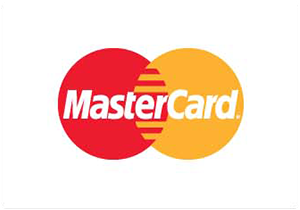

Follow Us:
Set your brand apart with custom-designed eyewear! At Eyewearbeyond, we specialize in tailor-made eyeglasses and sunglasses that fit your specifications. Request a quote and start designing now!
Your email information will be kept strictly confidential and our business staff will ensure that your private information is absolutely safe!
Ready to bring your unique eyewear designs to life? Start your journey to custom eyewear today—request your free quote now!
Your email information will be kept strictly confidential and our business staff will ensure that your private information is absolutely safe!
Looking for the perfect custom eyewear to represent your brand?
Our experts can help you find the perfect eyewear solution tailored to your requirements!
You have successfully subscribed to the newsletter
There was an error while trying to send your request. Please try again.